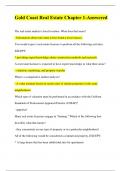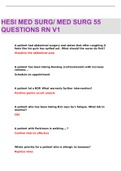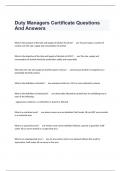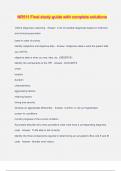Exam (elaborations)
M&A Final Exam Questions and Correct Answers
- Course
- Institution
Can you define M&A and explain the difference between a merger and an acquisition? Mergers and acquisitions (M&A) is an umbrella term that refers to the combination of two businesses. To buyers, M&A serves as an alternative to organic growth, whereas for sellers, M&A provides an opportunity to cash...
[Show more]












